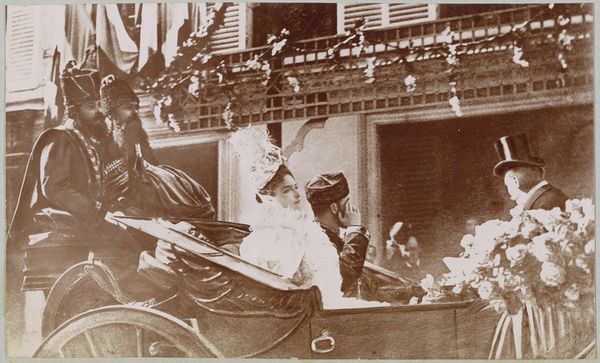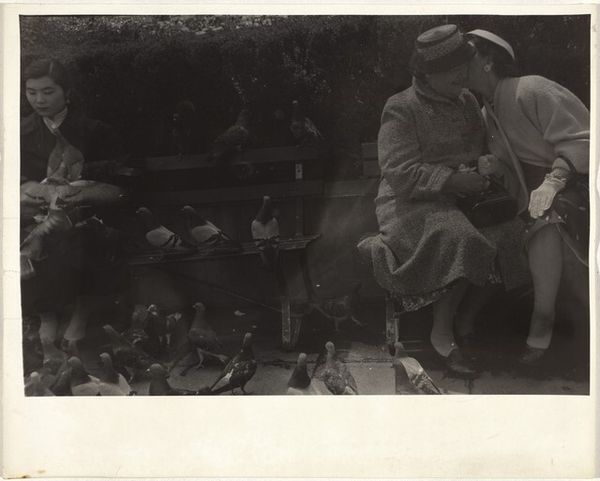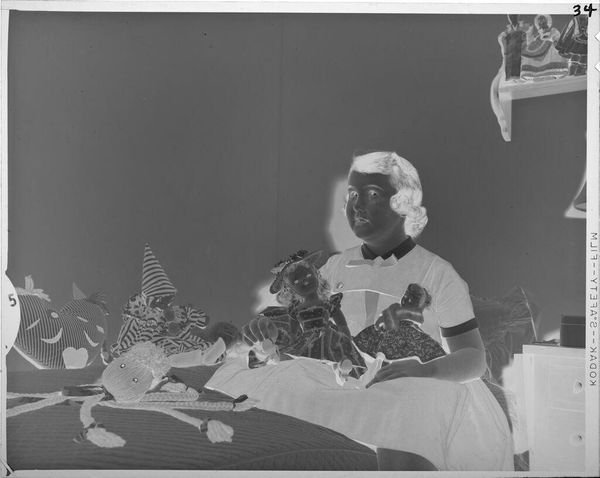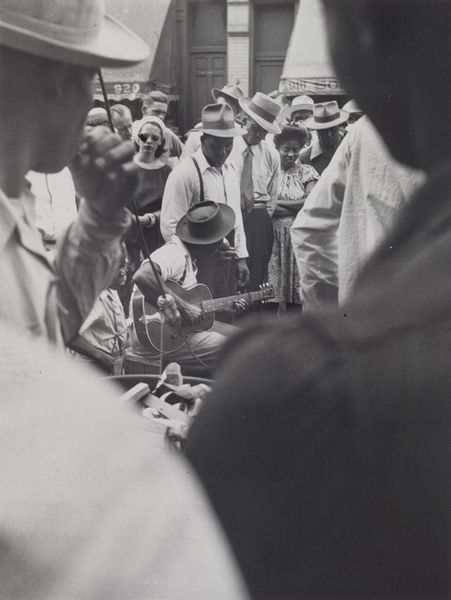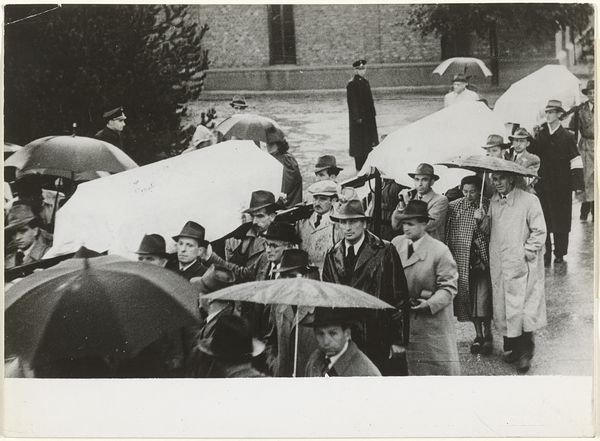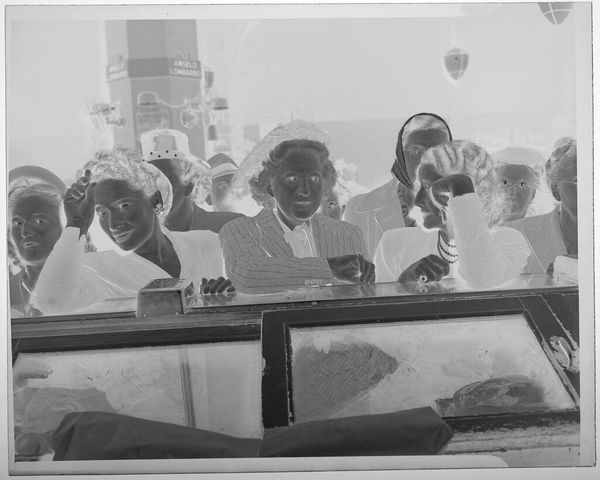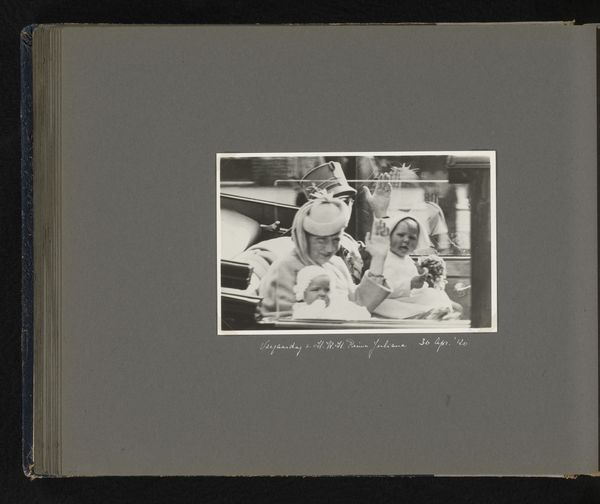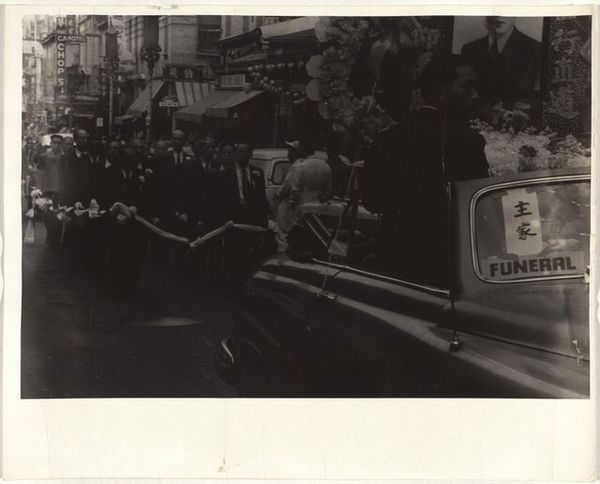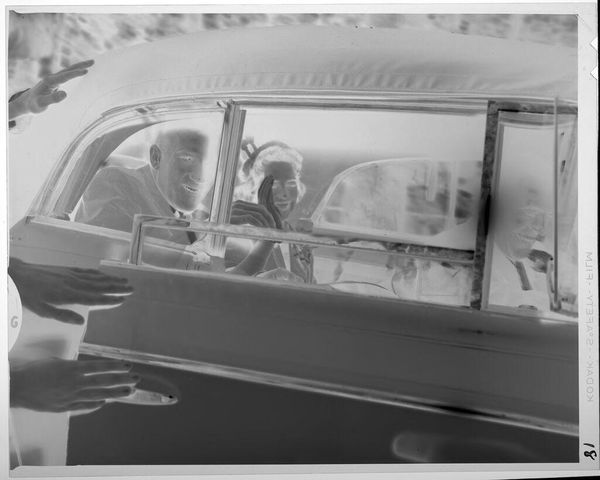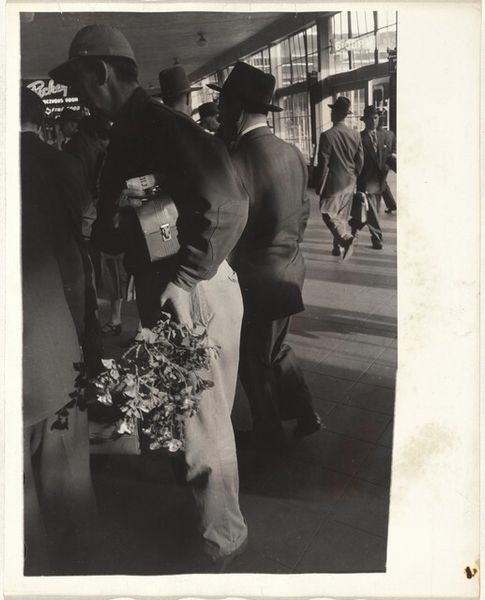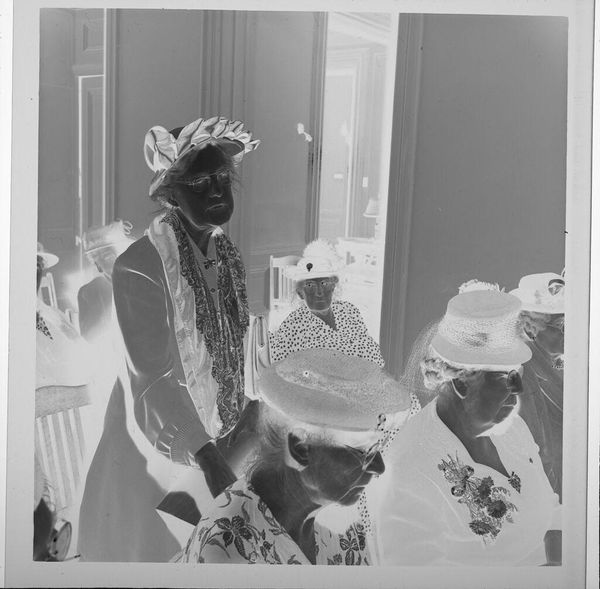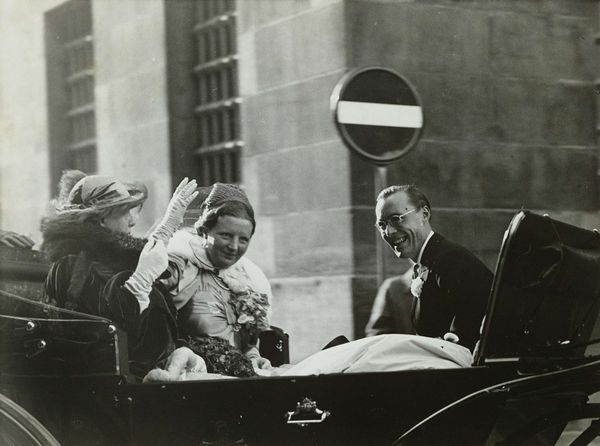
Juliana, koningin der Nederlanden, Beatrix, koningin der Nederlanden, en Irene, prinses der Nederlanden, in een auto te Den Haag op de verjaardag van Juliana op 30 april 1940 Possibly 1940 - 1944
0:00
0:00
photography, gelatin-silver-print
#
portrait
#
print photography
#
dutch-golden-age
#
archive photography
#
photography
#
historical photography
#
gelatin-silver-print
#
modernism
Dimensions: height 92 mm, width 140 mm
Copyright: Rijks Museum: Open Domain
Editor: This gelatin silver print, titled "Juliana, koningin der Nederlanden, Beatrix, koningin der Nederlanden, en Irene, prinses der Nederlanden, in een auto te Den Haag op de verjaardag van Juliana op 30 april 1940," captures a moment of the Dutch royal family. The composition seems quite spontaneous. How do you interpret this work formally? Curator: It's intriguing. Notice how the composition, while seemingly candid, relies on strong geometrical lines: the car window bisecting the image, creating a defined foreground and a blurred background. Consider the light – it’s flat, almost documentary, devoid of dramatic chiaroscuro, typical of formal portraiture. The flatness directs the eye not to emotional depth but rather towards the subjects and textures within the scene. Editor: The graininess, in particular, lends a raw, almost unpolished quality. Curator: Precisely! This roughness removes any sense of idealization, highlighting the materiality of the photograph itself. We’re not looking at an event; we’re looking at the *thingness* of the photograph. Observe the repeated shapes—the circular hats echo in the faces, drawing a visual harmony. How does this rhythmic repetition affect your perception? Editor: I see the rhythm; it makes the photograph more dynamic, despite the static poses. The focus shifts from the individuals to a unified image, structured around geometric forms. Curator: Indeed. By focusing on elements such as line, form, texture, and composition, and overlooking any sociocultural implications, the work stands alone as an object for our examination. The emphasis is not on what's depicted but how it's depicted. Editor: It’s interesting how deconstructing it in this manner actually helps give it structure and focus. Curator: Indeed. It provides a unique approach. Focusing solely on form unveils a structural complexity we may have overlooked at first glance.
Comments
No comments
Be the first to comment and join the conversation on the ultimate creative platform.

